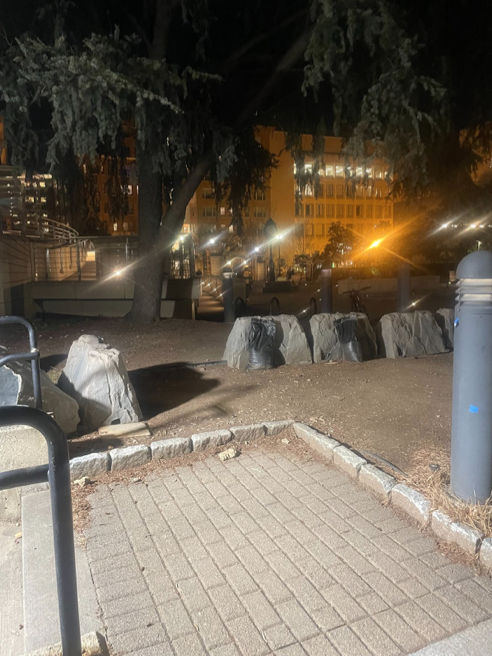By Eduardo Soltero


If you stroll through Kogan Plaza, walking by Gelman’s stairway and past the bicycle rack, you will find yourself in front of the casing of some plastic rocks that stand in the way of a shortcut often used by many students. I take this path everyday in order to cross from Kogan to Duquès, or even to the Deli. These shortcuts symbolize the accessibility that is stripped from GW students, along with the ability for us to have a reasonably walkable campus. Similarly, this path illustrates the neglectful architecture present on campus, forcing students to work harder and limiting our capability as individuals.
This pathway has been shaped by the desires of pioneering students as they pushed away the stone plastic covering blocking the way, forging a new route. The resulting path is then utilized by individuals who become “free riders” of this shortcut. Therefore, leaders shape the path for followers to trail behind.
This issue brings to surface other places on campus where accessibility has not been prioritized, emphasizing the need for sustainable solutions to these accessibility dilemmas in order to create a comfortable campus for all students. With a campus in the heart of Washington D.C., the establishment of accessible spaces proves even more important.
One success story can be seen through the action taken by GW students regarding the pathway that crosses the green space spanning across the front of Duquès Hall. This pathway was actually adjusted by students over time to remove the stone-smooth border that sat where students typically got off the grass. This example brings to light the many ways in which our campus has been shaped by its students, creating an observable and tangible impact. On this note, there are other campus locations that can be inspected under a similar lens to increase accessibility.
Another spot that can be generally regarded as inaccessible for students in wheelchairs is Shenkman Dining Hall, as well as Thurston Dining Hall. The counters that feature the dining options are not easily reachable by individuals who utilize a wheelchair. Thus, reaching the farthest container in these dining halls proves to be very difficult for many individuals. Due to this, I find myself having to frequently go under the crystal hood to access the food options. In order to create a dining hall that’s easily accessible for all students, these counters should be reconstructed in a more thoughtful manner.
All throughout our campus, there are examples of exclusive design decisions that inhibit the daily lives of GW students. These are all a part of a larger issue of accessibility on campus– a topic that has been espoused by organizations like the Office of Diversity, Equity, and Inclusion, which ensures that all communities are represented on campus. These factors have pushed students to reshape their surroundings, coming together to positively impact their community. We have become the destructive agent dismantling our campus’ current neglectful architecture.

